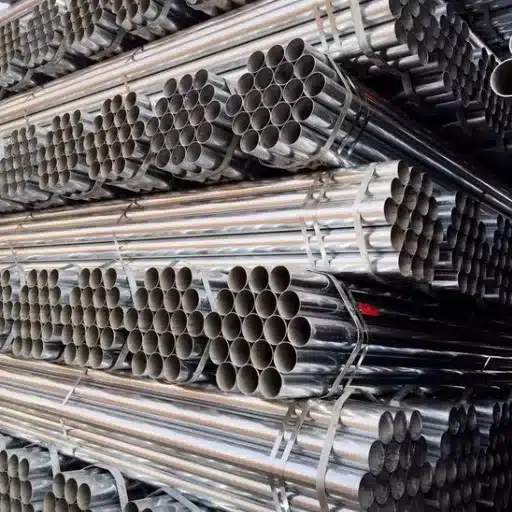Thoughtful design of plumbing systems is often overlooked, and it comes to the installation of sanitary fittings. It is one of the most important considerations that go into making sure any system functions optimally for as long as possible. Whether you are preparing to renovate your home, construct a new space, or upgrade your plumbing system, selecting the proper material for each part can save you headaches down the road. This guide explores the various types of sanitary fittings, discussing their advantages and disadvantages so that by the end, you can make the right decision for your plumbing needs and requirements. We’ll discuss some positive aspects related to durability, performance, and peace of mind, while focusing on the right materials of your choice.
What Are Sanitary Fittings and Why Are Materials Important?
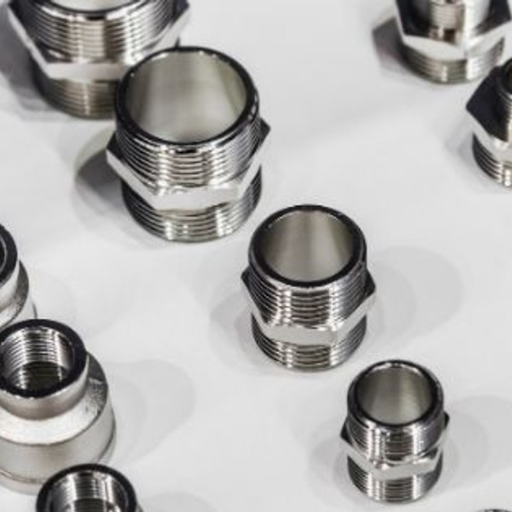
Sanitary fittings refer to the parts included in plumbing systems that are meant for the proper transport of water, waste, and other fluids. These parts are pivotal in the maintenance of cleanliness and hygiene in residential areas, commercial buildings, and industrial sites. Selecting the proper material impacts the life span, the ease of corrosion with the element’s setting, and overall efficacy of the fitting. Others are PVC, which is lightweight and cheaper compared to other materials, while stainless steel is popularly used for its durable and strong nature. Right material selection creates a dependable system that meets safety requirements while minimizing the chances of leaks or failures in the long run.
Understanding Sanitary Fittings and Their Applications
Sanitary fittings are essential components in systems that prioritize hygiene, particularly in industries like food and beverage, pharmaceuticals, and biotechnology. They are designed to meet stringent safety and cleanliness standards, ensuring the integrity of processes that handle sensitive materials. Below is a detailed list of various types of sanitary fittings and their specific applications:
- Sanitary Clamps
-
-
- Details: Maintains pips and equipment in place with clear separation for cleaning.
- Applications: Usual in the dairy, brewing, and pharmaceutical industries, where quick system maintenance is helpful.
-
- Sanitary Valves
-
-
- Details: Control the unit operations of pumping and sanitary the cyclic cleaning of the system.
- Types:
-
-
- Butterfly Valves – Flow regulation that is uncomplicated and light.
- Diaphragm Valves – Perfect for regulating flow and protection against contaminants.
-
- Applications: Used in controlling fluids in food, process systems, and chemical systems.
-
- Tri-Clamp Fittings
-
-
- Details: A set of clamps with gaskets that fit spiral onto a ferrule form a sanitary fit with seals.
- Applications: Functional in fields that deal with cleaning and sterilizing pipelines, like breweries and distilleries.
-
- Sanitary Gaskets
-
-
- Details: Ensure a hygienic seal between connecting pipes, meeting the desired hygiene standards.
- Applications: Used in systems that transport liquid or powder.
-
- Elbows and Tees
-
-
- Details: Allow for system branching and directional changes in the piping.
- Applications: Common in complex piping designs in numerous manufacturing plants.
-
- Sanitary Pipes and Tubes
-
-
- Details: Bacteria are less likely to form on smooth surfaces, therefore, the interiors of sanitary pipes and tubes are made smooth.
- Applications: Found where liquid, gas, or semi-solid needs to be moved in clean rooms or sterile environments.
-
Every single one of these fittings is chosen depending on the requirements of the system, like the pressure, temperature, and what materials are compatible. Proper sanitary fittings support operational efficacy and compliance with sanitary codes and regulations.
The Importance of Sanitary Fittings in Hygienic Environments
Hygienic fittings help maintain proper hygiene in sensitive zones such as food processing, pharmaceutical manufacturing, and biotechnology labs. It keeps these areas from joining leaks and contamination issues using secure connections. Sanitary fittings are made from stainless steel that combine the ease of cleaning with durability. These fittings guarantee compliance with health standards and regulations while preserving product integrity and consumer safety.
How Material Choice Affects Durability and Performance
The selection of materials influences both the durability and the hygienic performance of system fittings. The preferred materials for engineering components are stainless steel, grades 304 and 316, due to their corrosion resistance, ease of cleaning, and mechanical strength. For instance, 316 stainless steel was found to be more resistant to chlorides and other harsh chemicals because of the added molybdenum, which makes it suitable for use in auxiliary systems in pharmaceutical and food processing plants. Also, components that need to withstand high temperatures and chemicals are made from polymers such as PTFE and PEEK. These materials are suitable for use where operating conditions exceed 500°F (260°C). Using proper materials extends structural life and ensures compliance with industry standards such as FDA, ISO, and GMP, increasing the cost-effectiveness of the systems while minimizing maintenance and non-work time.
Which Materials Are Commonly Used for Sanitary Fittings?
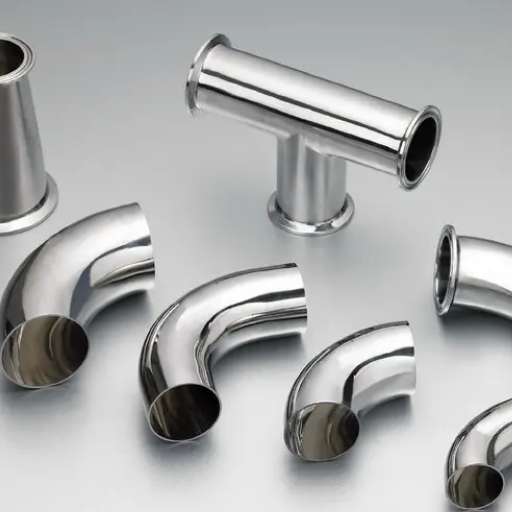
Stainless steel has the greatest use in sanitary fittings due to its tough nature, resistance to rust, and ease of cleaning. Grades 304 and 316L are commonly used as they can be ‘surgically cleaned’ (which means they can meet the requirements of hygiene). Furthermore, PTFE and PEEK materials can also be used for the seals or parts of the sanitary fittings because they can withstand high temperatures and are chemically resistant. These materials are chosen to withstand rigid industry standards while maintaining sanitary conditions.
Stainless Steel Sanitary Fittings: Benefits and Applications
Stainless steel sanitary fittings offer many benefits, such as being a critical component in industries that require cleanliness and durability. Their primary advantage is exceptional corrosion resistance. Stainless steel, especially grades 304 and 316L, can endure exposure to moisture, acids, and other harmful substances that may be present in food processing, pharmaceutical, or chemical industries. These properties ensure strong resistance, a longer service life, and lower chances of contamination.
Furthermore, stainless steel has a smooth, non-porous surface that inhibits the growth of bacteria. This property is vital for maintaining hygiene in applications such as brewing, drug manufacturing, and most importantly, dairy production. Industry data suggests that stainless steel sanitary fittings have decreased cleaning time by 25%, meaning maintenance costs are lower and operational efficiency is boosted.
Another key aspect is their robustness and ability to handle high pressure and temperature changes. For instance, 316L stainless steel fittings can endure temperatures above 800°F. This ability makes them perfect for use in extreme heat sterilization processes as well as cryogenic applications.
Sanitary stainless steel fittings are environmentally friendly and support sustainable business practices since they are recyclable. Recent statistics indicate that more than 80% of stainless steel utilized in industries is recycled, aiding in lowering ecological damage and resource depletion.
Such benefits, coupled with compliance with strict international regulations like the FDA and the EU, are what make stainless steel fittings pivotal in industries where safety, hygiene, and product life are paramount.
Brass Fittings: Advantages and Limitations
brass fittings present notable advantages, including exceptional resistance to corrosion, heightened durability, and useful machinability. These characteristics make them ideal for many plumbing and mechanical works. In addition, brass fittings can withstand high temperatures and have high versatility, making them reliable in challenging environments. However, I perceive some downsides, particularly in their higher price relative to other materials like plastic, as well as the possibility of dezincification in certain water systems, which can lead to the weakening of the material over time. Knowing these benefits and constraints aids me in tailoring the right fit to specific applications.
PVC and Other Plastic Materials for Sanitary Applications
PVC is considered a brilliant choice of plastic when it comes to sanitary applications because it is lightweight, strong, and resistant to corrosion. It is suitable for plumbing systems, drainage systems well and sewage system lines since it does not deteriorate when water or chemicals are present. It is expected that PVC pipes to last over 50 years under appropriate conditions.
The smoothness of water passages is vital for the reduction in friction and an increase in PVC water flow rate. It is a negative that soundscharacteristic below justification risk of blockage or sediment formation in PVC pipes when compared to metals. In residential and industrial settings, certain grades of PVC are able to withstand pressure exceeding 400 PSI. Standing out from the rest are CPVC chlorinated polyvinyl chloride and cross-linked polyethylene, which are classified under other plastic materials. For PEX, ease of installation is a great advantage as the material is flexible and requires fewer fittings, which reduces the number of potential leaks. CPVC is popular in hot water systems as it can sustain high temperatures of 200 degrees Fahrenheit.
Complying with certifications like NSF/ANSI standards is critical when selecting PVC or other plastic materials in relation to their safety and functionality in potable water systems. Not only are these materials cost-effective, but they are also eco-friendly, as many can be repurposed into new products after their useful life. The use of plastic materials in mechanical systems enhances ease of installation, reduces costs, and boosts long-term dependability.
How to Choose the Right Material for Different Plumbing Systems?
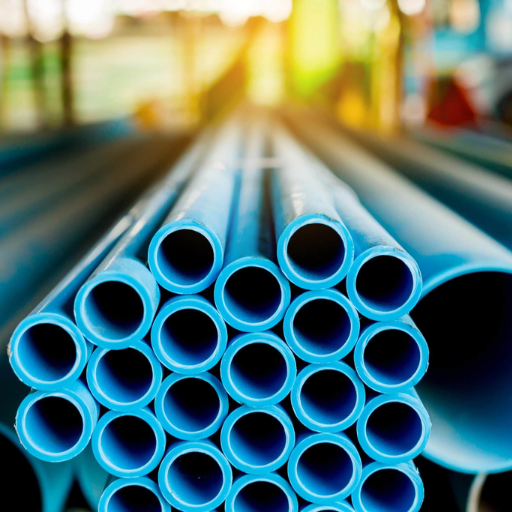
- Consider the System Type
Determine if the plumbing system is for potable water, sewage, or heating. Different systems have specific requirements.
- Assess Durability and Compatibility
Use the more durable materials, such as PVC and CPVC, when it comes to corrosion, temperature, pressure, and water.
- Verify Certification Standards
Check if the materials comply with NSF/ANSI certifications for potable water or any other water industry standards for the intended purpose.
- Account for Environmental Factors
Select materials that withstand the local climate, water composition, and other exposure conditions.
- Budget and Installation Needs
Choose the materials whose costs are lower but guarantee reliability while offering lower installation difficulties.
Material Selection for Bathroom Fixtures
Choosing materials for the plumbing fixtures requires a balanced consideration of the durability, appearance, and functionality of the material. For common materials with historical data, the following are recommendations to aid decision-making:
- Stainless Steel
Being resistant to staining and corrosion, stainless steel is preferred for bath faucets, sinks, and showerheads. Stainless steel sinks and faucets are easy to maintain and durable. For example, 316-grade stainless steel is perfect for high moisture areas and those exposed to saline water. 304-grade is best for other areas.
- Ceramic
Sinks and toilets comprise a subset of plumbing fixtures made from ceramic because of their smooth surface, which is non-absorbent as well as scratch-resistant. Quality ceramics are capable of enduring frequent use and up to 1200°F. Research suggests that ceramic fixtures, with reasonable care, can last for more than two decades.
- Brass
Brass bathroom fixtures have a longer lifetime due to their high durability, resistance to corrosive substances and bacteria, and their sanitary nature. Polished brass, a mixture of copper and zinc, offers tarnishing protection and lasts more than 10 years, adding a touch of elegance to the entire bathroom.
- Tempered Glass
Tempered glass is widely used for shower doors, as well as specialty sinks and shelves. Its composition makes it four times stronger than normal glass, ensuring safety and temperature shock resistance. This additional thermal resistance reduces the possibility of cracking and shattering during extreme temperature changes.
- Plastic Polymers (e.g., Acrylic or ABS)
Plastic polymers like acrylic and ABS are increasingly being used in the manufacturing of bathtubs, vanities, and shower trays due to their low weight and cost. ABS is known for having a high impact resistance, while acrylic is known for retaining heat and having a smooth finish. Modern acrylic bathtubs are estimated to have 10-15-year warranties.
- Natural Stone (e.g., Granite, Marble)
Natural stones have a classic beauty, but they require sealing to maintain water resistance. Their natural beauty makes them a good option for countertops and sinks. Due to the stunning and timeless appeal, natural stones like granite have a compressive strength greater than 200 MPa, and granite sinks. With careful attention, the stone fixtures can be used for more than 25 years.
Using these principles allows both professionals and homeowners to select materials tailored towards functionality and beauty while valuing longevity by understanding the properties, maintenance needs, and the environmental considerations of the various bathroom finishes and fixtures.
Best Materials for Food and Beverage Industry Sanitary Fittings
Hygiene, durability, and resistance to wear must be top of the list when selecting sanitary fittings for most food and beverage industries. One of the most used fitting materials is stainless steel, especially grades 304 and 316, due to the corrosion resistance and strength. Stainless steel grade 316 is especially suited for more saline or acidic environments due to having more molybdenum.
Also popular are food-grade plastics, such as polypropylene and polyvinylidene fluoride. These plastics are lightweight and inexpensive while still being resistant to many industrial chemicals and cleaning agents. Additionally, they satisfy FDA and other regulatory approval standards concerning safety and sanitation.
Common sealing elements in the fittings of sanitary systems are food-grade elastomers such as silicone and EPDM. These materials are flexible, resistant to high temperatures, and compatible with steam and other forms of cleaning.
Following industry standards, stainless steel fittings can last more than 25 years under proper care; sophisticated plastics and elastomers also perform well but may need periodic checks and replacements depending on the level of use. Adequate selection of materials guarantees compliance with laws, operational efficiency, and safety in the food and beverage industry.
Selecting Materials That Meet 3-A Sanitary Standards
To ensure compliance with 3-A Sanitary Standards, I pay careful attention to the selection of materials and components, particularly non-corrosive, non-toxic, and easily cleaned surfaces. For example, my most-used metal is always stainless steel due to its sturdiness and enduring cleansing properties. Other grades of plastics and elastomers undergo scrutiny based on their ability to comply and perform under specific set conditions.
What Makes Stainless Steel the Leading Choice for Sanitary Tubing and Fittings?
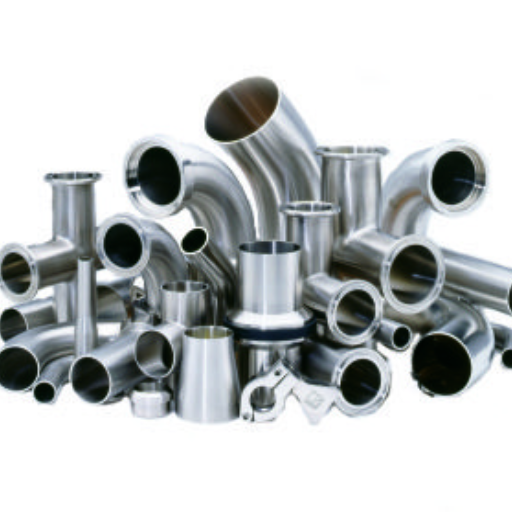
Durability, resistance to corrosion, and ease of cleaning are why stainless steel takes the lead for sanitary tubing and fittings. It is capable of withstanding harsh temperatures while containing bacteria, contaminants, and any other hostile elements, which means it is compliant with sanitary requirements. Furthermore, its surface is non-reactive, which guarantees safety in food, pharmaceutical, and other hygiene-sensitive industries. Because of these reasons, stainless steel is a dependable and effective material when it comes to sanitary applications.
Corrosion Resistance and Hygiene Benefits
Stainless steel has always received appreciation for its outstanding ability to resist corrosion. Fierneovation for food processing and healthcare, and even the pharmaceutical industries, prefer stainless steel for its sanitary applications. The material’s resistance is due to the passive layer oxidizing and forming a protective fence it gets when chromium is included in the mixture above 10.5%, even in damp conditions such as moist air. It is self-repairing and oxidizes passively, which gives the material a consistent corrosion barrier as well as long-term durability.
Porous steel does not bleed and also assists in absorbing infection, liquids, and other contaminants. For hygiene purposes, this characteristic aids in effortlessly cleaning its exterior and meets the high sanitary criteria that are needed for sensitive environments. For instance, test results indicate stainless steel surfaces can be boiled to sterilization temperatures without retaining 95% better than other porous surface materials, significantly reducing contamination. Also, smooth surfaces have a low tendency to allow dirt capture, thus improving cleanliness.
Stainless steel can perform well in extreme cleaning products, elevated temperatures, or salty conditions, proving to be reliable in all situations. These unique properties make this material perfect where corrosion resistance as well as hygiene is critical.
Durability and Pressure Rating Considerations
Stainless steels possess great operational toughness and resistance to compressive deformation, which makes them suitable for use in construction, industrial piping, and machinery. Different grades of stainless steel are designed to cope with varying levels of strain. For example, grade 316 stainless steel pipes can support operating pressures exceeding 16,000 psi, depending on diameter and wall thickness. In contrast, grade 304 stainless steel, popularly used in lower-pressure applications, also possesses good strength and corrosion resistance.
Furthermore, stainless steel retains its structural characteristics throughout its entire operating region, from cryogenic temperatures to above 1,500 degrees Fahrenheit (815 °C). This makes it desirable in the aerospace industry and for chemical processing, power generation, and other associated industrial sectors. Moreover, the high tensile strength of stainless steel ensures that components are subjected to extreme forces for extended periods without experiencing fatigue or failure, even in harsh conditions, which decreases the need for replacements and long-term maintenance.
Easy to Clean and Maintain Properties
The importance of cleanliness, as well as the need for hygiene, has made stainless steel a preferred material for food and kettle processing, health care, and other industries as Stainless Steel is largely resistant to grimes, bacteria, and dirt due to its non-porous surface, making it easier to maintain a sanitary environment. It’s cleaning further adds to the ease of use as it can be cleaned with basic soap and water and still gives off a shine. It is also resistant to corrosion from acidic or alkaline-based cleaning materials. Research indicates that maintenance and offsetting maintenance unblock the eco-friendly outcomes results as stainless steel gives off amazing longevity of up to decades, enduring hygienic grimes and keeping seamless surfaces.
When Should You Use Tri-Clamp Fittings vs. Weld Fittings?
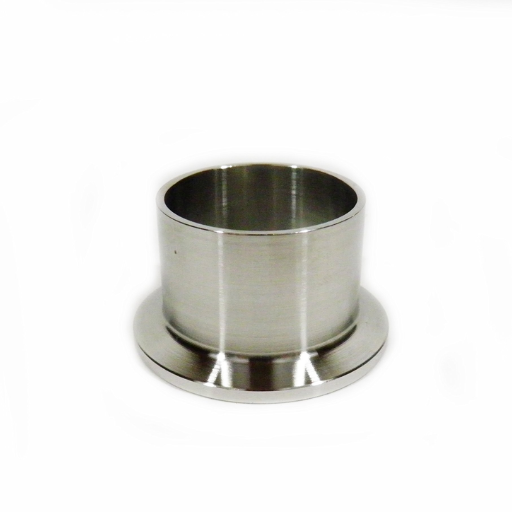
Tri-clamp fitting holds great benefits for applications that require disassembly, cleaning, or maintenance because of its ease of use and sanitary traits. They are widely used in the food, pharmaceutical, and beverage industries. These fittings allow easy access without requiring expert-level tools.
Weld fittings are the best option in cases where installation is permanent and leakage is a concern. They are also used in high-pressure and high-temperature systems where a secure bond is essential. Weld fittings have lower contamination risks, which makes them a better option because they reduce the chance of dirt and bacteria getting trapped.
With this information, it is easier and more appropriate to use tri-clamp fittings where cleaning is required more often. Weld fittings, on the other hand, are better suited for robust,t long-term connections.
Advantages of Tri-Clamp and Tri-Clover Fittings
Industry segments like food and beverage as well as pharmaceutical manufacturing,g extensively use tri-clamp and tri-clover fittings. This popularity is because of their numerous benefits. A distinct advantage is their ease of installation and removal. Tri-clamps enable operators to easily assemble or disassemble systems without specialized tools. Such features lead to a decrease in operational downtimes during cleaning, maintenance, or configuration processes.
Hygienic design is another benefit. They are made of stainless steel, having a smooth, continuously welded finish that defeats bacteria’s ability to harbor. This is why these fittings are the best choice for applications where high levels of hygiene are paramount, like in the production of dairy products or in bioprocessing.
Reliable performance of tri-clamp fittings is also observed in high-pressure and high-temperature environments, which makes these fittings even more preferable. For example, stainless steel variants are often made of 304 or 316-grade and have great corrosion-resistant properties while still being put to harsh industry tests for safety and durability.
Lastly, these fittings have an adaptable design as they come in many different sizes and configurations to accommodate different systems. This allows automation for smaller or larger-scale operations. Use of gaskets made out of silicone, EPDM, Teflon, and other materials also prevents leakage, making the fittings more reliable and efficient.
In summary, tri-clamp and tri-clover fittings offer outstanding durability, flexibility, as well as hygienic properties in environments that require precision and cleanliness, as these factors are of utmost importance. Their design and construction are efficient, supporting consistent performance across a variety of industrial applications.
Benefits of Butt-Weld Fittings in Sanitary Applications
The sanitary applications make use of butt-weld fittings because of their aesthetic and seamless design. The fittings used in these industries forego threaded connections to mitigate the accumulation of bacteria, which is relevant in food, pharma, and biotech industries. The seamless internal surfaces contribute positively in preventing contamination, aiding in the reduction of strict cleaning requirements as the CIP (Clean-In-Place) systems can be used, meeting the hygiene standards without hassle.
These fittings are made out of 316L or 304 grade stainless steel, which makes them extremely resistant to corrosion. butt-weld fittings are durable in the toughest of conditions. Studies show that butt-weld fittings made of stainless steel withstand harsh, high-pressure, and high-temperature environments, which helps in forming strong and leak-proof connections. These fittings are made to withstand high pressure and flow, making them ideal for big operations.
Butt-weld fittings require significantly lower maintenance, which is an advantage. Fewer joints that are prone to wear and tear lead to reduced operational costs and increased reliability. These butt-weld fittings can also be designed in an endless array of configurations and sizes, making them ideal for different designs of sanitary systems. The urge to provide cleanliness, dependability, and efficiency in sanitary processes makes butt-weld fittings excel over other fittings.
Gasket and Seal Considerations for Different Fitting Types
In the process of choosing gaskets and seals for sanitary fittings, it is important to bear in mind the compatibility of the material, temperature limits, and other directions of the fitting’s gasket. Global hardware gaskets and seals, as fitted parts, serve the purpose of achieving free and sanitary flow systems.
Temperature resistance, flexibility,y and elastomer application are key factors when using EPDM (Ethylene Propylene Diene Monomer) and silicone. The populated selection of materials used in PTFE (polytetrafluoroethylene) gaskets includes other adjoining flexible, aggressive, risky chemicals and high temperatures, owing to its robust stability against chemicals and thermal aggressors. A highlight for the use of PTFE gaskets is its ability to withstand extreme temperatures usually ranging from -450°F to 500°F (-268°C to 260°C), thus suitable for cryogenic and high-temperature environments.
In regard seal and screw cap closures, for them to achieve a durable and fatigue-free life, an optimal fitting compressive stress is to be kept to avoid creep and leak separation failure as well as without tight fit(s). Targets set for seal longevity unmasked heavy inefficiencies, such as lack of maintenance unmasked which significantly deviate from the functional goals through substantial intervals governed by regulated controls.
Lastly, all gaskets and seals require, from a contamination perspective, that materials are non-reactive, easy to clean, and do not support microbial proliferation. Choosing the correct type of gasket and seal for particular sanitary fittings maintains system functionality as well as system compliance across food processing, pharmaceutical, and biotechnological industries.
How to Ensure Your Sanitary Pipe Fittings Will Withstand High Pressure and Temperature?
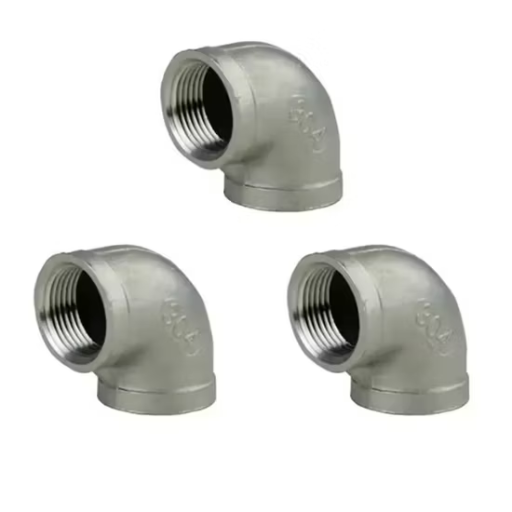
If you want your sanitary pipe fittings to resist deformation from high pressure and temperature, follow these guidelines:
- Choose High-Quality Materials: Choose parts with high-strength tempered steel fittings, known for withstanding heat, pressure, or corrosion.
- Verify Compatibility: Verify system specs against the manufacturer’s guidelines to ensure the fittings meet specific pressure and temperature rating checkpoints with exact measurable predefined limits.
- Perform Regular Inspections: Routine maintenance and inspections like wear and crack check,s that could comprise the fittings are always recommended.
- Use Proper Installation Techniques: Stress-induced leaks or fitting failures can be averted by using securely immobilized fittings that do not move under extreme pressure.
- Follow Industry Standards: To ensure dependability under critical stresses, fitting selection needs to be limited to ones meeting defined industry benchmarks.
Adhering to these steps ensures that your fittings remain reliable and efficient even in challenging environments.
Material Properties That Affect Pressure and Temperature Resistance
While choosing materials for fittings subjected to high temperature and pressure, the following material characteristics require thorough assessment, considering operational efficiency and safety:
- Yield Strength: Stainless Steel 316L is guaranteed to be suitable for high-demand applications as it possesses a yield strength of 25,000 psi. This means that 316L will be able to withstand a pressure of 25,000 psi without deformation.
- Thermal Expansion: Steel is a material that needs thermal treatment to expand, while aluminum expands freely without much pressure, and hence, Aluminum has a much higher rate of expansion compared to steel.
- Corrosion Resistance: Nickel alloys are highly favored for marine applications and other chemical industries because they are exposed to highly corrosive agents.
- Creep Resistance: Inconel and other high-performance alloys have insulating protection designed to resist creep, long-term deformation due to sustained heat, high stress, and creep.
- Thermal Conductivity: While copper and aluminum have better and higher thermal conductivity, tools and materials with balanced stiffness and strength are needed when working with high-pressure systems.
- Resistance to Fatigue: Pressure and temperature changes may foster material fatigue over time. Fatigue is mitigated under such conditions by materials such as carbon steel which undergoes surface hardening treatments.
Considering these material properties makes it possible to choose the most suitable materials for high-performance fittings with regard to safety and endurance against extreme conditions.
Certification and Testing Standards for High-Quality Fittings
To guarantee the dependability and safety of components under harsh conditions, high-quality fittings need to meet a certain level of certification and testing. One such requirement is the basic standard of ASME (American Society of Mechanical Engineers) B16.5, which defines the design, materials, dimensions, and testing criteria of flanges and fittings. The ISO 9001 standard also addresses the quality management system of the manufacturer, ensuring processes are completed in a system that promises quality, leading to consistent results.
Another important procedure is hydrostatic testing, which ascertains whether a fitting can endure high pressure without leaking or failing. An example would be exposing fittings to 1.5 times the pressure of their maximum allowable working pressure to see whether they truly are safe. Other additional testing includes Nondestructive testing (NDT) such as ultrasonic testing and radiographic inspection to find possible damages such as cracks or voids within the material without causing damage.
Specifications focus on filler materials composition to guarantee the fittings can withstand environmental issues such as corrosion, as well as high temperature and pressure extremes. Provisions also require citing standards. The American Society for Testing and Materials (ASTM) provides specific material requirements, like ASTM A105, which outlines forged carbon steel fittings , making sure the right material is used for the right purpose.
While following these universal standards of certification and testing, manufacturers ensure that the fittings will serve the needs of the oil and gas, chemical processing, and power generation industries. Meeting these standards ensures that operational reliability, structural integrity, safety, and system protection are maintained even under unique and severe working conditions.
Preventing Leaks in High-Stress Environments
Defending against leaks in high-stress conditions demands superior engineering, top-tier materials, and exacting manufacturing discipline. One primary method involves the use of gaskets and seals, which are extremely tough and capable of enduring harsh pressures and temperatures. For example, PTFE (polytetrafluoroethylene) and graphite are commonplace in gaskets as they withstand severe chemical and thermal abuse; PTFE’s temperature limit is 500°F (260°C).
Furthermore, modern inspection methods such as ultrasonic testing and radiographic evaluation detect potential flaws in fittings and connections that could undermine their integrity and functionality. Industry studies show that inspection enforcement is estimated to improve reliability by more than 35% through rigorous failure rate control. Maintaining correct torque parameters also contributes significantly during installation, as overtightening screws can create fittings that result in stress points which eventually translate into leaks. Positive control of pressure application through force distribution tools such as hydraulic torque wrenches helps achieve uniform tension control.
To reduce additional risks, industries use corrosion-resistant alloys like Inconel and stainless steel for fittings that are subject to highly corrosive environments. Research indicates that using corrosion-resistant materials can increase the lifespan of components by 20-30%, which minimizes maintenance and downtime. Collectively, these approaches form a comprehensive strategy for preventing leaks while maintaining safe and reliable operations in the most challenging conditions.
Reference Sources
- “Establishing the Taxonomy of Building Defects Triggered by Moisture Intrusion and Dampness”1:
-
- Key Findings: This study identifies moisture as a primary cause of structural defects in buildings, including issues like rising damp, condensation, and water leakage. It highlights the role of faulty plumbing and substandard materials in exacerbating these problems.
- Methodology: The research employed literature reviews, visual inspections, and case studies to analyze moisture-related defects and their impacts on building integrity.
- “Integrating Women and Entrepreneurship for Sustainable Rural Water Supply Schemes in Sri Lanka”2:
-
- Key Findings: This paper explores the integration of women in managing rural water supply systems, emphasizing the importance of entrepreneurial skills for sustainability. It also discusses the role of plumbing hardware trading as a complementary business model.
- Methodology: Case studies and qualitative analyses were conducted in Sri Lanka, focusing on community-based water supply schemes.
- “A Research Study about the Expectations from Sanitary Napkins, Current Problems and Design of a Functional Sanitary Napkin”4:
-
- Key Findings: While not directly about plumbing, this study provides insights into material performance and user expectations, which could inform the development of sanitary fittings with enhanced hygiene properties.
- Methodology: A survey of 500 women was conducted to gather data on product performance and design preferences.
- “Sanitary Installations and Appliances: Their Place in Good Building Design”5:
-
- Key Findings: This historical study discusses the evolution of sanitary fittings and their role in modern building design, emphasizing the use of durable materials like polythene.
- Methodology: The research is based on a review of design practices and material innovations over the years.
Frequently Asked Questions (FAQs)
Q: What are sanitary tube fittings, and what materials are commonly used to make them?
A: Sanitary tube fittings are specialized components used in hygienic processing systems where cleanliness is paramount. The most common materials used for sanitary fittings include 304 stainless steel and 316L stainless steel, which offer excellent corrosion resistance and durability. These materials are preferred because they can withstand frequent cleaning and sterilization processes. Other materials include various grades of stainless steel, aluminum, and in some applications, non-metallic materials like food-grade plastics or silicone for gaskets. The material selection typically depends on the specific application, with pharmaceutical and food processing industries having particularly stringent requirements.
Q: How do I choose the right sanitary fittings for my plumbing system?
A: Choosing the right sanitary fittings depends on several factors: the nature of the fluid being transported, pressure requirements, temperature conditions, and regulatory compliance needs. First, determine the material compatibility with your product—304 stainless steel works for many applications, while 316L offers better corrosion resistance for harsh environments. Second, consider the connection type (clamp fittings, threaded fittings, or welded joints) based on your maintenance needs and system design. Third, ensure the fittings are designed to meet relevant industry standards (such as 3-A Sanitary Standards). Finally, source fittings from reputable manufacturers who provide certification documents and quality assurance.
Q: What are i-line fittings, and how do they differ from other sanitary fittings?
A: I-line fittings are a specific style of hygienic pipe connections designed for industrial processing applications where cleanliness is essential. Unlike standard sanitary fittings that often use tri-clamp connections, i-line fittings feature a unique design with a male/female mating surface that creates a smooth, crevice-free internal surface when properly installed. The key differences include their self-aligning design, ability to handle higher pressures, and typically a more compact profile. I-line fittings are used in conjunction with clamps and gaskets to create leak-proof connections and are particularly popular in pharmaceutical manufacturing, where product purity is critical. They’re often manufactured from 304 stainless steel or 316L for superior corrosion resistance.
Q: How do sanitary tube fittings help change the direction of flow in plumbing systems?
A: Sanitary tube fittings, particularly elbows, are fittings specifically designed to change the direction of flow in hygienic plumbing systems. These come in various angles, with 45° and 90° being the most common. The smooth internal surface of sanitary elbows minimizes turbulence and prevents product buildup, which is crucial for maintaining sanitary conditions. Unlike industrial plumbing elbows, sanitary elbows typically have a larger radius to facilitate smoother flow transition and easier cleaning. They’re manufactured with polished internal surfaces (usually to a specific Ra value) to prevent product adhesion and bacterial growth. When properly installed, these fittings ensure product integrity while allowing for efficient system design in applications with space constraints.
Q: What are the different types of sanitary fittings available in the market?
A: There’s a wide variety of sanitary fittings available to meet different processing needs. The most common types include clamp fittings (tri-clamps), which allow for quick assembly and disassembly; sanitary ferrules, which form the base of many connections; elbows and bends for directional changes; tees and crosses for flow division; reducers for pipe size transitions; and specialized fittings like sight glasses and sample valves. Additionally, there are threaded fittings, welded fittings, and union-style connections. Specialized varieties include i-line fittings for higher pressure applications and Q-line fittings for ultra-pure requirements. Each type is available in various materials, with 304 stainless steel being commonly used for general applications and 316L for more corrosive environments.
Q: Where are sanitary tube fittings typically used in industrial applications?
A: Sanitary tube fittings are used in industries where hygiene, product purity, and ease of cleaning are paramount. They’re extensively used in food and beverage processing, particularly in dairy, brewing, and liquid food production. The pharmaceutical industry relies on these fittings for the production of medicines and biologics. They’re also critical in cosmetics manufacturing, biotechnology, and chemical processing of sensitive products. Additionally, sanitary fittings are used in conjunction with clamps and gaskets in water treatment systems, especially where ultrapure water is required. In medical device manufacturing, these fittings ensure product safety. The common thread across all applications is the need for systems that prevent contamination, are easily cleanable, and can withstand CIP (Clean-in-Place) and SIP (Sterilize-in-Place) procedures.
Q: How do I ensure I’m purchasing high-quality sanitary fittings online?
A: When purchasing sanitary fittings online, always buy from reputable suppliers who specialize in hygienic process equipment. Look for fittings that comply with relevant industry standards like 3-A, FDA, ASME-BPE, or ISO certifications. Verify that material certifications (MTRs) are available upon request. Quality fittings will specify the exact material used (e.g., 304 stainless steel or 316L), surface finish measurements, and manufacturing tolerances. Check customer reviews and ask about return policies. Reputable suppliers should provide detailed product specifications, including pressure and temperature ratings. Be wary of significantly lower-priced options, as they may indicate substandard materials or manufacturing processes. Finally, ensure the supplier can provide technical support and guidance if you have application-specific questions.
Q: What are the advantages of different piping materials used for sanitary applications?
A: Different piping materials offer unique advantages for sanitary applications. Stainless steel (particularly 304 and 316L) provides excellent corrosion resistance, durability, and can withstand high temperatures and pressures. It’s also non-porous and doesn’t impart flavors to products. Borosilicate glass offers visibility of process fluids and superior chemical resistance. High-grade plastics like PEEK or PVDF can be advantageous for their lightweight properties, chemical resistance, and sometimes lower cost. Silicone and other elastomers are used for flexible connections where movement is required. For ultra-pure applications, specialized alloys like AL-6XN offer enhanced resistance to highly corrosive environments. The choice depends on factors including the product being processed, cleaning chemicals used, temperature requirements, pressure ratings, and budget constraints.
Q: How are sanitary fittings designed differently from regular plumbing fittings?
A: Sanitary fittings are designed with several distinctive features that differentiate them from regular plumbing fittings. First, they feature smooth, crevice-free internal surfaces to prevent product trapping and bacterial growth, often with specific surface finish requirements (Ra values). Second, they’re manufactured from materials that can withstand frequent cleaning and sterilization, with 304 stainless steel being common. Third, sanitary fittings are designed for easy disassembly and inspection, typically using clamp-type connections rather than permanent joints. Fourth, they incorporate gasket materials that are food-grade and replaceable. Finally, sanitary fittings are designed to strict dimensional standards to ensure interchangeability between manufacturers. Unlike regular plumbing fittings used in homes, sanitary fittings are specifically engineered to meet regulatory requirements for industries where product contamination must be prevented.






